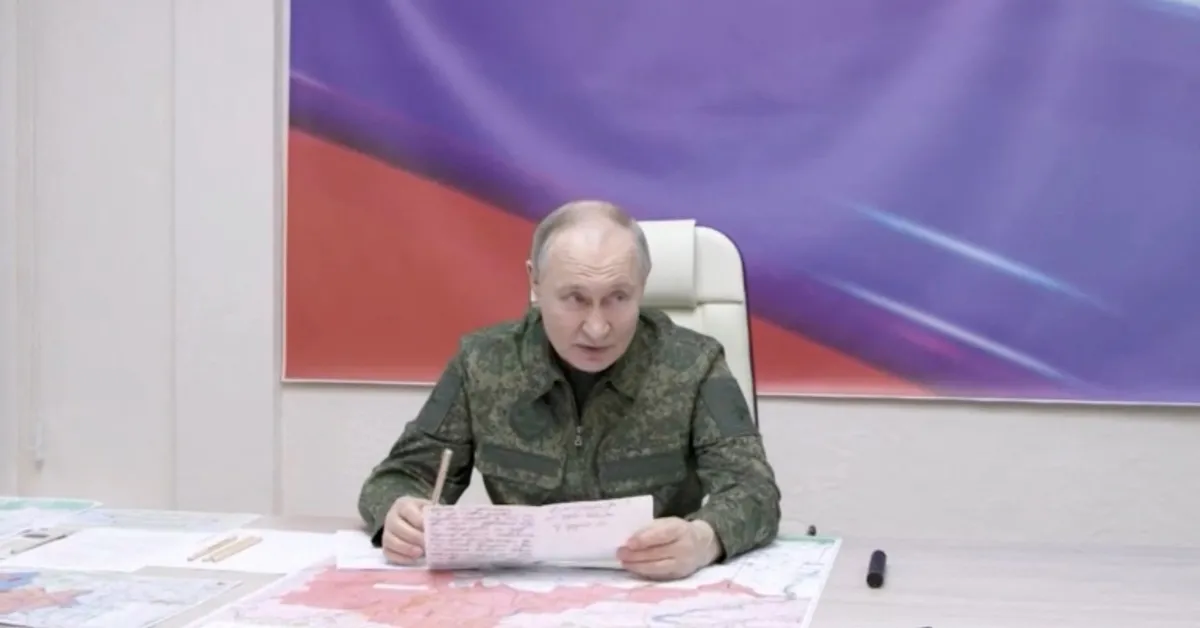
In a significant move, Russia has presented the United States with a list of demands aimed at resolving the ongoing conflict in Ukraine and resetting its relations with Washington. Sources familiar with the discussions indicate that the specifics of Moscow's demands remain unclear, as does its willingness to engage in peace talks with Kyiv before these demands are accepted.
Over the last three weeks, Russian and American officials have engaged in both in-person and virtual conversations to discuss these terms. The Kremlin's demands are described as broad and reminiscent of previous stipulations presented to Ukraine, the U.S., and NATO. Historically, these terms have included a prohibition on NATO membership for Ukraine, a pledge against deploying foreign troops in the country, and international acknowledgment of President Vladimir Putin's claims over Crimea and four other provinces.
In recent years, Russia has insisted that the U.S. and NATO must address what it describes as the root causes of the war, particularly NATO's eastward expansion. U.S. President Donald Trump is currently awaiting a response from Putin regarding a proposed 30-day truce, which Ukrainian President Volodymyr Zelenskiy has indicated he would accept as an initial step towards peace talks. However, the details of a potential ceasefire agreement remain uncertain.
Some U.S. officials and experts express apprehension that Putin, a former KGB officer, might exploit a truce to further divide the U.S., Ukraine, and Europe, potentially undermining any substantive discussions. Both the Russian embassy in Washington and the White House have yet to respond to requests for comment on this matter.
In Kyiv, President Zelenskiy praised the recent meeting held in Saudi Arabia between U.S. and Ukrainian officials, describing it as constructive. He suggested that a possible 30-day ceasefire could serve as a foundation for drafting a comprehensive peace deal. This approach aligns with Russia's longstanding demands, which have been presented in various forms over the past two decades, some of which have been included in formal negotiations with the U.S. and Europe.
Most recently, these demands were discussed with the Biden administration during a series of meetings in late 2021 and early 2022, as tens of thousands of Russian troops amassed on Ukraine's border, poised for invasion. Moscow's requests included limiting U.S. and NATO military operations from Eastern Europe to Central Asia. While some of these terms were rejected, the Biden administration engaged with Russia to address several of them in an attempt to avert conflict, a strategy that ultimately failed when Russia launched its invasion on February 24, 2022.
In recent weeks, U.S. and Russian officials have suggested that a draft agreement previously discussed in Istanbul in 2022 could serve as a starting point for renewed peace talks. However, this agreement never came to fruition. During those discussions, Russia requested that Ukraine renounce its NATO ambitions and accept a permanent status as nuclear-free, along with a veto over actions taken by countries seeking to assist Ukraine in the event of war.
The Trump administration has not clarified its approach to negotiations with Moscow, as the two sides are currently involved in separate discussions: one focused on resetting U.S.-Russia relations and the other on achieving a peace agreement concerning Ukraine. Within the administration, there appears to be a division regarding the best course of action. U.S. Middle East envoy Steve Witkoff, who is leading the discussions with Moscow, recently characterized the Istanbul talks as “cogent and substantive negotiations” that could potentially guide a peace deal.
Conversely, retired General Keith Kellogg, Trump's top envoy for Ukraine and Russia, expressed skepticism about using the Istanbul agreement as a foundation for future negotiations, advocating instead for the development of an entirely new framework.
Experts suggest that Russia's demands are not solely aimed at shaping a potential agreement with Ukraine but are also intended to influence its Western counterparts. Over the past two decades, Russia has consistently made demands that seek to limit the West’s military presence in Europe and possibly extend Putin's influence across the continent.
According to Angela Stent, a senior fellow at the Brookings Institution and former top U.S. intelligence analyst for Russia and Eurasia, “There’s no sign that the Russians are willing to make any concessions.” She asserts that the demands have remained unchanged, indicating a lack of genuine interest in achieving peace or a meaningful ceasefire.
In their efforts to prevent what U.S. intelligence officials deemed an imminent invasion, senior Biden administration officials engaged with Russian counterparts on three of the Kremlin's longstanding demands. These included calls for a ban on military exercises by U.S. and NATO forces in new alliance member territories and restrictions on U.S. missile deployments within range of Russian territory. The same demands have been reiterated by Russia since 1945, highlighting an enduring pattern in its foreign policy.
As the geopolitical landscape continues to evolve, the implications of Russia's demands for Ukraine and its relations with the West remain critical points of discussion for policymakers and analysts alike.